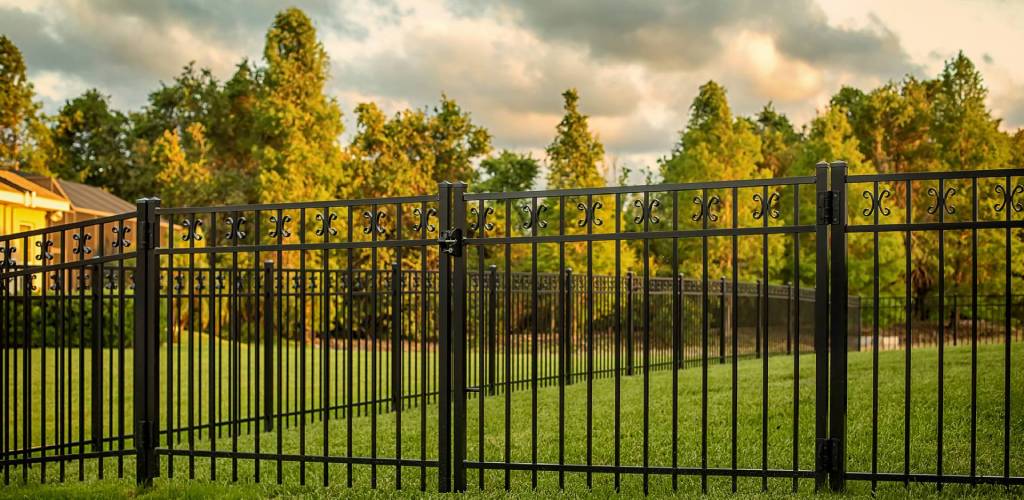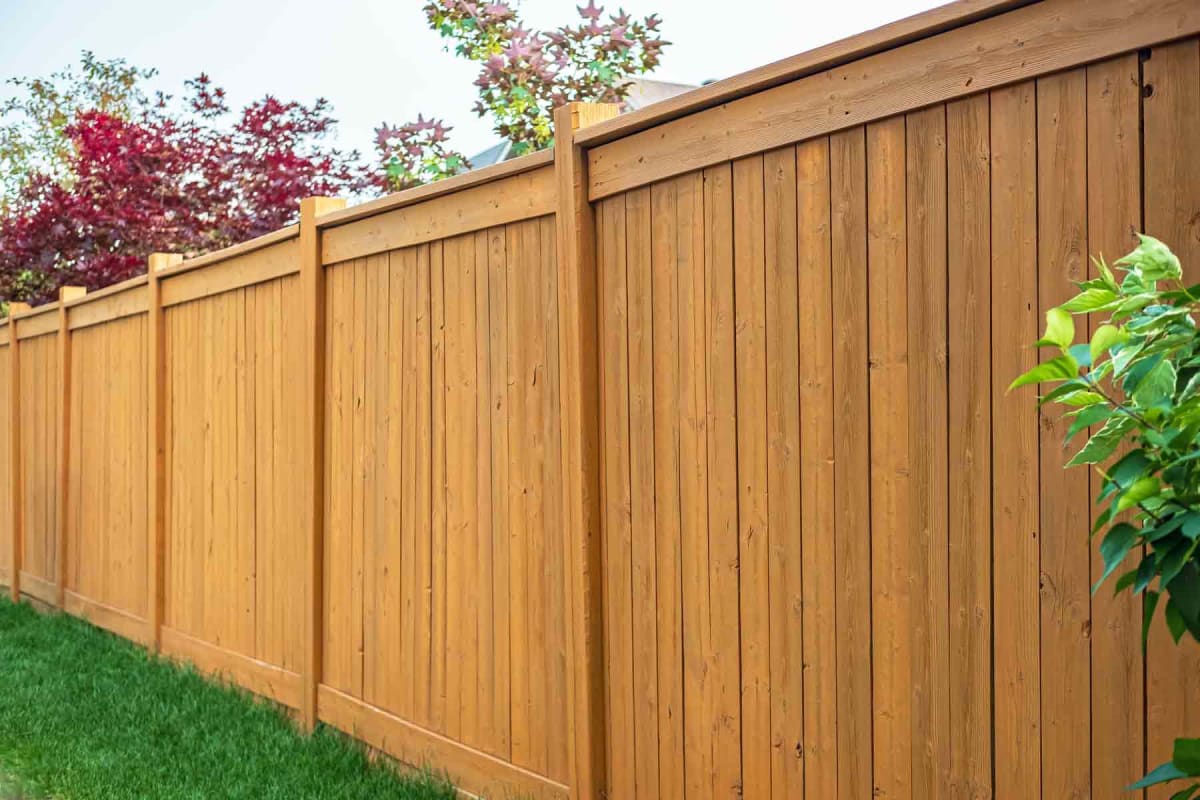All Categories
Featured
When it comes to securing your residential or commercial property, selecting the correct fencing elevation is a critical decision. An appropriately chosen fence can function as a powerful deterrent against invaders and enhance the total protection of your home or company. Picking the ideal elevation involves several variables, including neighborhood regulations, your details safety demands, and the kind of fencing you are considering. Below's a thorough guide to aid you establish the optimal fencing height for securing your residential or commercial property.
![]()
In many cases, house owners may need a permit to create a fence over a certain height. To prevent lawful issues or penalties, constantly contact your neighborhood authorities prior to waging installation. Furthermore, if you stay in a community controlled by a home owners' organization (HOA), be sure to review their standards, as they may have certain policies about fencing elevation and style.
In more risky areas, or if you have useful home or are managing protection issues, you might want to think about an also taller fencing-- approximately 8 feet or higher. A taller fencing is more daunting to potential intruders and supplies a better physical barrier. If you want to go also further, take into consideration including security attributes like razor wire, electrical fencing, or sharp latticework tops, which can make the fencing much more difficult to breach.
Wooden Fences: Wooden fencings provide privacy, but they can be fairly very easy to climb. A height of 6 to 8 feet is suggested for appropriate protection. To enhance prevention, consider adding sharp tops or installing a trellis with climbing plants. Wrought Iron Fences: Wrought iron fences are tough and tough to climb up. They're typically made use of for higher-security purposes and can be constructed between 6 to 8 feet high. The vertical bars, particularly when covered with spikes or factors, work as a powerful obstacle. Chain-Link Fences: A chain-link fencing that's 6 to 8 feet high can provide a functional and affordable option. Adding functions like barbed cable or razor cable at the top can boost protection considerably. Vinyl Fences: Vinyl fencings can also offer privacy and protection, however like wooden fencings, they may need additional elevation and features to stop climbing. A strong plastic fence of 6 to 8 feet in height can be really effective at keeping undesirable site visitors out. 4. Privacy vs. Protection. If your main worry is privacy, a taller, strong fencing (like wood or vinyl) may be the most effective option. Taller fencings block the view from the outside, ensuring that burglars can not quickly evaluate your residential or commercial property or place valuables. Privacy fencings of 6 to 8 feet are common for this objective.
However, if security is even more of a worry than privacy, you may wish to opt for a fencing product that gives visibility, such as chain-link, while still being high adequate to prevent climbing up. The advantage of this technique is that it permits you to maintain an eye on activity outside your property and make it harder for a person to technique unnoticed.
![]()
Anti-Climb Attributes: Setting up anti-climb spikes or trellis expansions at the top of your fence will make it a lot more challenging for trespassers to scale it. These can be particularly efficient on wood or plastic fences. Razor Cord or Barbed Cord: If safety is a considerable issue, adding razor wire or barbed cord to the top of your fencing is a highly effective deterrent. These features can be integrated with a solid wood or chain-link fence for maximum defense. Electric Fencing: For increased security, electric fencing can be set up on top of an existing fencing. While these require special installment and a specialist to make certain safety and security, they can be very effective in preventing unapproved access to your residential property. 6. Visual Considerations. While security is the key goal, it's likewise essential to believe concerning exactly how the fencing will certainly look. Some areas or communities may have visual criteria or HOA standards, so selecting a fence that matches your property's design while still offering protection is necessary. Choosing a fencing that blends right into the setting and fits the architectural style of your home can guarantee that your fence is both practical and aesthetically appealing.
Final thought. When picking a fence elevation for optimal safety and security, aim for an equilibrium between height, material, and extra safety attributes to ideal satisfy your needs. An elevation of 6 to 8 feet is usually sufficient for many property homes, yet if you live in a high-risk area or have particular protection issues, taller fencings with added functions like spikes or electrical systems could be needed.
- Understand Local Regulations and Rules. Before you purchase a brand-new fence, it's necessary to understand the local zoning laws and building codes that might dictate the optimum elevation for surround your area. Lots of districts have constraints on the elevation of fences, particularly for front lawns, where fences are frequently limited to 3 to 4 feet. In yards, nonetheless, you might be permitted to build taller fences, typically ranging from 6 to 8 feet.

In many cases, house owners may need a permit to create a fence over a certain height. To prevent lawful issues or penalties, constantly contact your neighborhood authorities prior to waging installation. Furthermore, if you stay in a community controlled by a home owners' organization (HOA), be sure to review their standards, as they may have certain policies about fencing elevation and style.
- Take into consideration the Degree of Safety And Security You Required. The height of your fencing directly correlates with the degree of safety and security it offers. A fencing that's too brief might be easy to climb up over or bypass, making it inefficient in staying out intruders. For higher protection, go for a fencing elevation of at least 6 feet, which is typically enough to avoid most people from conveniently scaling it.
In more risky areas, or if you have useful home or are managing protection issues, you might want to think about an also taller fencing-- approximately 8 feet or higher. A taller fencing is more daunting to potential intruders and supplies a better physical barrier. If you want to go also further, take into consideration including security attributes like razor wire, electrical fencing, or sharp latticework tops, which can make the fencing much more difficult to breach.
- Choose the Right Fence Product. Different fence materials give varying levels of safety, and the elevation of the fence need to be matched with the material's resilience. For instance:
Wooden Fences: Wooden fencings provide privacy, but they can be fairly very easy to climb. A height of 6 to 8 feet is suggested for appropriate protection. To enhance prevention, consider adding sharp tops or installing a trellis with climbing plants. Wrought Iron Fences: Wrought iron fences are tough and tough to climb up. They're typically made use of for higher-security purposes and can be constructed between 6 to 8 feet high. The vertical bars, particularly when covered with spikes or factors, work as a powerful obstacle. Chain-Link Fences: A chain-link fencing that's 6 to 8 feet high can provide a functional and affordable option. Adding functions like barbed cable or razor cable at the top can boost protection considerably. Vinyl Fences: Vinyl fencings can also offer privacy and protection, however like wooden fencings, they may need additional elevation and features to stop climbing. A strong plastic fence of 6 to 8 feet in height can be really effective at keeping undesirable site visitors out. 4. Privacy vs. Protection. If your main worry is privacy, a taller, strong fencing (like wood or vinyl) may be the most effective option. Taller fencings block the view from the outside, ensuring that burglars can not quickly evaluate your residential or commercial property or place valuables. Privacy fencings of 6 to 8 feet are common for this objective.
However, if security is even more of a worry than privacy, you may wish to opt for a fencing product that gives visibility, such as chain-link, while still being high adequate to prevent climbing up. The advantage of this technique is that it permits you to maintain an eye on activity outside your property and make it harder for a person to technique unnoticed.
- Enhancing the Safety And Security with Additional Functions. The elevation of your fencing is just one element of your total security method. Take into consideration integrating added features to boost its performance:

Anti-Climb Attributes: Setting up anti-climb spikes or trellis expansions at the top of your fence will make it a lot more challenging for trespassers to scale it. These can be particularly efficient on wood or plastic fences. Razor Cord or Barbed Cord: If safety is a considerable issue, adding razor wire or barbed cord to the top of your fencing is a highly effective deterrent. These features can be integrated with a solid wood or chain-link fence for maximum defense. Electric Fencing: For increased security, electric fencing can be set up on top of an existing fencing. While these require special installment and a specialist to make certain safety and security, they can be very effective in preventing unapproved access to your residential property. 6. Visual Considerations. While security is the key goal, it's likewise essential to believe concerning exactly how the fencing will certainly look. Some areas or communities may have visual criteria or HOA standards, so selecting a fence that matches your property's design while still offering protection is necessary. Choosing a fencing that blends right into the setting and fits the architectural style of your home can guarantee that your fence is both practical and aesthetically appealing.
Final thought. When picking a fence elevation for optimal safety and security, aim for an equilibrium between height, material, and extra safety attributes to ideal satisfy your needs. An elevation of 6 to 8 feet is usually sufficient for many property homes, yet if you live in a high-risk area or have particular protection issues, taller fencings with added functions like spikes or electrical systems could be needed.
Latest Posts
Uncover Outstanding Auto Repair Solutions in Chicago – Expert Care for Your Vehicle
Published Jun 01, 25
1 min read
Explore Top Vehicle Maintenance Solutions at Montclare Auto Repair – Quality Service Today
Published May 31, 25
1 min read
Learn How to Reduce Expenses on Car Maintenance with Montclare Auto Repair’s Exclusive Deals
Published May 24, 25
1 min read
More
Latest Posts
Uncover Outstanding Auto Repair Solutions in Chicago – Expert Care for Your Vehicle
Published Jun 01, 25
1 min read
Explore Top Vehicle Maintenance Solutions at Montclare Auto Repair – Quality Service Today
Published May 31, 25
1 min read
Learn How to Reduce Expenses on Car Maintenance with Montclare Auto Repair’s Exclusive Deals
Published May 24, 25
1 min read